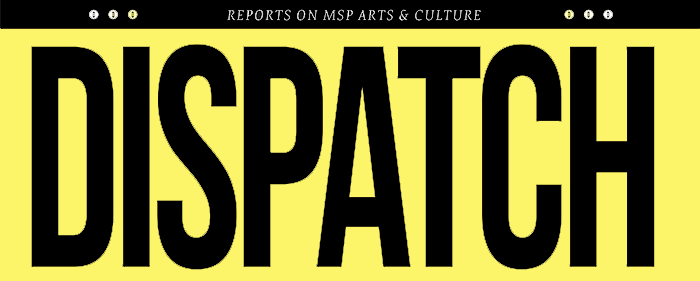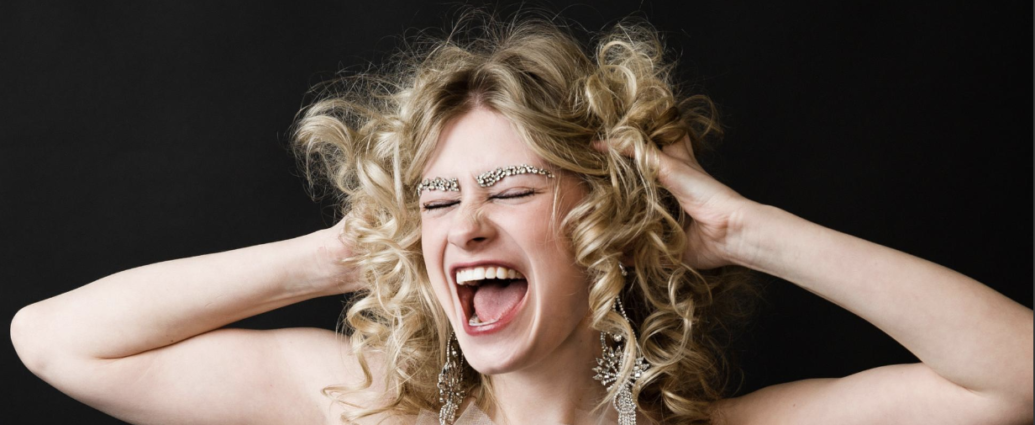U of M apparel design students emerge from four turbulent years ready to solve the world’s challenges artfully.
WORDS BY KATIE DOHMAN
Photo by Joe Dammel
Each year the senior apparel design class produces a final project, shown on and off runway, that showcases the talent, ambition, and skill they’ve attained in school. This year’s program, DAWN, featured the first runway show since 2020 and, fittingly, tackled themes of facing the challenges facing new grads today, resilience, and change. Luci Kandler—College of Design teaching specialist in charge of these students and a designer in her own right (folks of a certain age may remember the brand Calpurnia Peach)—says that although this class experienced unprecedented challenges it “didn’t diminish the creative spark that makes them able to really accomplish anything,” she says.
“What makes me hopeful for this class is their compassion,” she adds. “They know what they need to be happy and healthy, they know what others need to live fulfilling lives, and they have a perspective that the apparel industry needs.”
With that in mind, DISPATCH turned to six of the senior designers to get their perspective on their project, their education, and their future. What follows are interviews, condensed for length and clarity.
Kylie Halvorson
On accomplishment: Creating my collection was a full circle moment—since I was in second grade, I wanted to be a fashion designer and create beautiful dresses. I felt like I was honoring and connecting with my younger self. It was a proud, vulnerable, and powerful moment to see my childhood dreams come to fruition as an adult.
On her inspiration: For this collection, I drew inspiration from one of my favorite childhood movies, Barbie Swan Lake. I was about three years old when the movie came out and was captivated by the dancing, music, and iconic blue and pink dress worn by Barbie. As one of my earliest memories, it reminds me of the sparkle and magic that first captured my imagination. I also find inspiration through researching vintage and historical fashion, specifically Vivenne Westwood and Alexander McQueen. There are whimsical and playful qualities to each of these designers.
On the future: I feel optimistic about my peers and other young creatives entering the fashion industry. There are new perspectives and innovations being shared everyday, and it is exciting to see Gen-Z creatives’ willingness to go outside of the box and push boundaries.
Cindy Leewood
On balancing old and new: I was raised in Cambodia and had amazing opportunities to first-handedly see high society, history, and the people of Cambodia. Cambodian fashion designs and products are wonderful, but they are exclusive to Cambodia and the events inside Cambodia. “Embracing the old and bringing in new life” is a quote that reflects how I wish to retain my heritage in modern relevance on a global platform. Khmer fabrics are unique, handmade, and expensive. Younger generations have started to stray from traditional fabrics because they aren’t as “trendy” as what is seen on supermodels or well-known brands. I am giving Khmer fabric a new platform to shine by meeting the needs of my target audience and their modern lifestyle outside of Cambodia.
On material importance: My dad once asked me why it is my desire to go far away from the city and purchase overpriced fabric from people who work inefficiently. Weaving is a mix of repetitive motions on a large loom which can definitely be mechanized. However, how much of that will put people out of work? How much of it will be left for the younger generations to learn about? Weaving in itself is an art form: It’s the very same reason people knit when they can buy a knit top in a store. …I know that there is a person putting hours into the fabric I am purchasing. I am able to sit, listen, and empathize. I know I am paying for a skill that has been passed down through family generations and is a form of livelihood for a family. Traditional fabric operates on such a small scale it is much easier to control how much is being produced. Part of being a conscious consumer is knowing your purchasing powers. When you purchase from small genuine communities it will be more expensive, but you will greatly reduce carbon footprint. Weaving looms are manually handwoven and there is no excess waste because it is created on demand or in small quantities. Down to dyeing fabrics, threads, tying looms: everything is completed manually.
Mattie Nunn
On optimism: Seeing such diversity of style nowadays makes me feel incredibly optimistic. I love seeing people take ownership of their identities and how they want to be perceived by others. I love seeing how happy and confident people are when they know they are absolutely killin’ an outfit. One of my favorite things is to see older women with an amazing sense of style. Trends are often focused on and marketed towards the younger generations and older women often get forgotten in the industry, they create their own trends as there’s no huge machine pushing a silhouette onto them. I like that.
On expression and hurdles: That’s my passion, creating clothes that help people express themselves. I want to make clothes that can be worn as many times as possible in as many ways as one can think of. I want to make clothing for performers on stage. My siblings and I have a band: NUNNABOVE, and I make and style all of our performance outfits. If you have no connections in this industry, no one notices you or the work that you put in… I’ve been blessed with the few connections I’ve made, and I’m still striving to make more. I’ve made a conviction to crawl to the top if I have to.
On the future: There’s a lot of work to do on the side of us, the spoiled consumer, and the companies who are focused on making a profit and care not for the state of the environment. I want to be a part of the shift towards reducing consumption by producing clothes that convert into other clothes. Clothes that you can literally wear in multiple different ways for a very long time. My latest line was a small capsule of winter coats that transformed: The first coat is fully reversible with a detachable hood that can turn into a purse. And the second coat was floor length with a zip-off skirt that became an entirely different wrap dress.
Anna Villalon
On barriers to style: Some major barriers that I’ve discovered through my work as a nonbinary artist in the fashion industry are the lack of genderqueer visibility in spaces historically dominated by the binary and the misrepresentation or misunderstanding of these identities in the media. The visibility of genderqueer individuals often falls prey to performative activism, where the nuance of gender identity is written off and the intent to be more “inclusive” collapses the fluidity of gender expression into umbrella terms such as unisex or gender-neutral. This is where we see stereotypes about gender expression arise in the media, where masculinity entails identifying as a man, femininity entails identifying as a woman, and gender neutrality entails wearing baggy clothes and appearing entirely androgynous. My work aims to disassemble these notions by bringing about characters and clothes that operate exclusively outside of the binary, and telling those stories in a format that legitimizes the presence of genderqueer individuals in media.
In the animation industry, only 5 percent of trans and non-binary characters are fully represented as humans, either being portrayed as hybrid humans, villains, or monsters, perpetuating the damaging notion that genderqueerness is equivalent to alienness. The narrow scope of animated content is reflected in representation behind the scenes, and more than ever we are seeing women and genderqueer creatives pushing to be in executive positions that can incite a more positive change. My work focuses not only on telling genderqueer stories, but also cultivating a community of like-minded artists and creatives because non-binary people deserve to exist in media and be the ones creating those stories!
How their art and fashion intertwine: My fashion work is heavily charged with character design principles, where the garments are used as a tool to convey the story of who this person is, what they do, what kind of life they are living…My practice is starting to transition away from fashion design so I can explore other mediums, because I see myself more as a storyteller than a designer. Transitioning my medium from designing physical garments meant to be reproduced to designing characters where the clothes are a visual asset and storytelling component (and not something that will end up in the landfill at some point) has pointed me towards the pursuit of creating something more intangible.
Ava Wagner
On goals: My goal is to make accessible fashion mainstream. Every person deserves to feel comfortable and confident in themselves and a disability should not prevent someone from expressing themselves with their clothing. In the long run, I want adaptive clothing to be sold in every retail store. This can be accomplished by making simple changes, such as using elastic in the waistband, or replacing buttons with magnetic snaps, and eliminating tags. Like I said, the adaptations do not need to be complicated—simple design changes will make a world of a difference to accommodate a range of mobility, sensory and functional needs.
On gaps: During my research, I noticed there is a large gap in the market for young adults. Young adults are interested in staying on top of trends and want to look great when going out with friends, interviewing for a job, or just running errands. I found little to no fashionable and practical clothing for people with disabilities in the young adult age range. My designs were intentionally designed for young adults and were inspired by current trends seen in the fashion industry. Due to the versatility of my designs, the garments can be dressed up or down.
On equal style opportunity: Everyone should have that opportunity to feel the same way that I feel when I put on my matching pink pantsuit, or my favorite pair of jeans. The way we dress ourselves dictates our day—we want to look good to feel good. I believe that every person should have clothing options that are accessible to their needs that make them excited to get dressed every morning- options that look good AND feel good. We should never have to sacrifice fashion for comfort, there is a middle ground where fashion can be both comfortable and fashionable.

